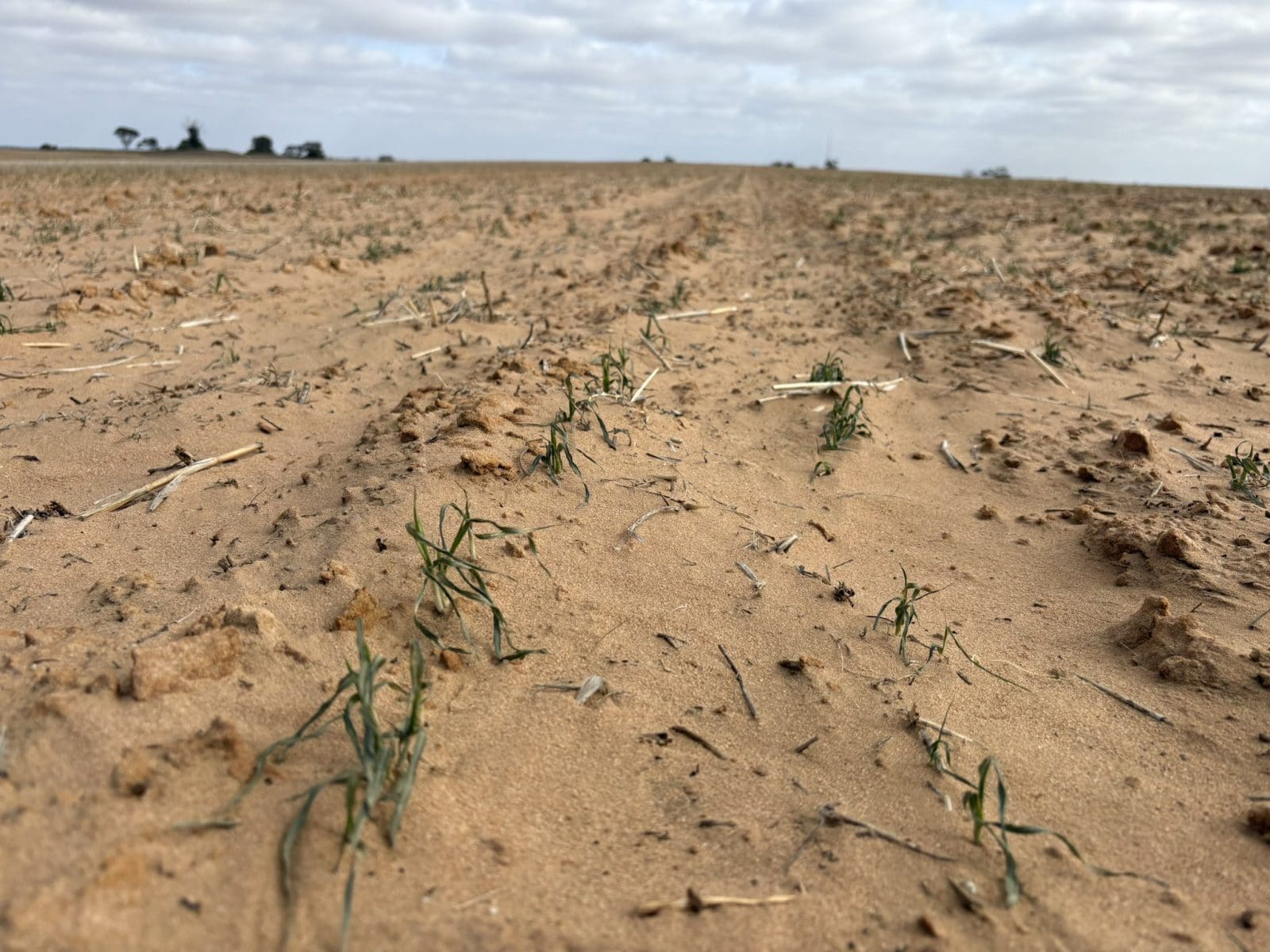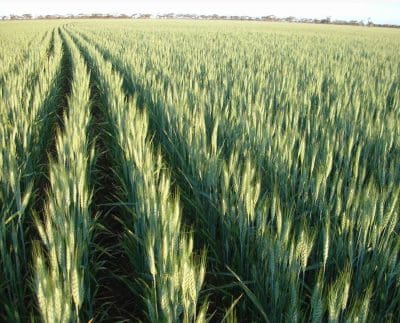
Fierce winds in the Mallee on Monday battered and partially covered some Mallee crops. Photo: Matt Witney, Dodgshun Medlin
AS WINTER crops in Queensland and much of New South Wales and Western Australia power out of the ground, most in Victoria are yet to emerge.
It puts many farms in Vic’s two main cropping districts, the Mallee and the Wimmera, in the same boat as the majority in South Australia: in need of rain soon to get cereals, pulses and canola established by the end of June.
As with SA, much of the Vic crop has been dry sown, and small pockets in the Mallee and Wimmera have had a reasonable start.
Monday brought handy rain to some districts; in the week to 9am today, highest registrations in the Wimmera and Mallee include: Goroke 11m; Natimuk 7mm; Sea Lake 8mm, and Ultima 11mm.
It also brought fierce winds, and crops in the Mallee particularly suffered as a result.

The 2005 season broke on June 10-11, and produced good yields from crops including this paddock of Yitpi wheat. File photo: Matt Witney, Dodgshun Medlin
As temperatures drop ahead of winter officially arriving next week, growers are hopeful for at least 15-20mm to preserve hopes for average or better yields, and taking heart from memories of those few seasons since 2000 when a late break produced a good crop.
Late start
AgVantage Agronomy Horsham-based director Tim Pohlner said he estimated that around 20 percent of the Wimmera’s winter crop has germinated.
“It’s absolutely terrible at the moment,” Mr Pohlner said.
“If we had a good rain soon, everything could be okay.”
“Everything’s brown; even with this light rain, it’s a very brown landscape.”
As with SA, and parts of southern NSW too, lack of subsoil moisture has crops relying heavily on in-crop rain and a mild spring, which seem likely in the absence of an El Niño.
“The long-term forecasts are not pessimistic.”
Also on the plus for croppers is decent groundcover after a reasonable crop last year, which helped to keep topsoil in place after Monday’s strong westerly and north-westerly winds.
“I haven’t witnessed too much erosion.”
Frontier Farming Systems Horsham-based research agronomist Jason Brand said parts of the Mallee were “every bit as bad” as SA, and Monday’s winds brought dust that reduced visibility to as little as 100m in places.
Like Mr Pohlner, he said stubble and conservation-tillage practices held topsoil in place, and the dust appeared to be coming from Australia’s interior.
Mr Brand said the northern Mallee generally was better placed than the southern Mallee, with some northern areas jagging rain from northern systems earlier in the year.
“There are patches where the crop’s out of the ground,” Mr Brand said, adding that some were in “all sorts of bother” because they have not had follow-up rain.
Spring arrives earlier in the Mallee than the Wimmera, and Mr Brand said it therefore has around two weeks less to wait for rain to germinate its vast area of dry-sown crops.
“In the Wimmera, you’ve got until the end of June before you get too panicky, but in the central Mallee, it’s in the next week or two that they really need a break.”
Growers in Vic, as well as the outer slopes and plains of southern NSW, and SA too, have generally dropped some area intended for canola, ideally established between Anzac Day and mid-May.
Agronomists report some early sown barley is showing signs of moisture stress, and small areas are being replanted after a failed germination for canola.
Lentils and wheat are generally seen as having the best prospects for jumping away once it rains.
“In the Wimmera, everyone’s still dry sowing, and there are patches near Rupanyup that got some good moisture.”
Grain Central: Get our free news straight to your inbox – Click here

HAVE YOUR SAY